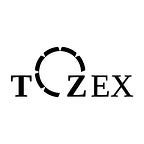After years of anticipation, the Ethereum merge has finally arrived. This is a significant event for the Ethereum community, as it marks a shift from the current Proof of Work consensus algorithm to the new Proof of Stake algorithm. This guide will explain what the merge is, why it’s happening, and what it means for Ethereum’s future.
What is the Ethereum merge?
The Ethereum merge is a fork that will change the consensus algorithm from Proof of Work to Proof of Stake. Using the Beacon chain, the Proof of Stake algorithm will allow Ethereum to move away from the energy-intensive mining process that is currently used to validate transactions on the network.
Under Proof of Stake, users can stake their ETH to participate in block validation. The previous PoW algorithm required “miners” to use specialized hardware and consume large amounts of electricity to validate transactions and add blocks to the blockchain. With PoS, this process will be much more efficient, as validators will only need to have their ETH staked in order to participate. This will greatly reduce the barriers to entry for Ethereum mining, but it will also reduce the network’s energy consumption by 99.98%.
Why is the Ethereum merge happening?
The Ethereum merge is happening because the Proof of Work algorithm is no longer considered to be secure or sustainable in the long term. PoW is incredibly energy intensive and requires specialized hardware, which makes it difficult for most people to participate in mining. Additionally, PoW is vulnerable to 51% attacks, where a malicious actor could gain control of the network by controlling more than 50% of the mining power.
While moving to Proof of Work will not immediately impact scalability, it does increase Ethereum’s potential for future scalability and opens the door to new features and applications that were not possible with PoW.
What does the Ethereum merge mean for the future?
The Ethereum merge is the first stage in a multi-stage process that has been dubbed by Ethereum cofounder Vitalik Buterin as the “merge, surge, verge, purge and splurge”. We already know what the merge is, but what about the rest?
Buterin has explained that the “surge” refers to the introduction of a new scaling solution called Ethereum sharding, which will allow the network to process more transactions per second and reduce the cost per transaction.
The “verge” is a more technical update, which involves switching the way that the network processes data from a “merkle tree” to a “verkle tree” structure. This means data will be stored more efficiently on the network, and it will be easier to process larger amounts of data.
The “purge” will be exactly what it sounds like — the protocol will be cleaned up, removing unnecessary data and reducing the amount of space required to store ETH on a hard drive.
Finally, the “splurge”, according to Buterin, will be “all of the other fun stuff.” We can take that to mean there are many more exciting plans for the future of Ethereum that have yet to be announced.
How do these changes affect gas consumption?
Ethereum’s gas fees are notorious for being high and often fluctuating wildly in a matter of seconds. This has been holding back the Ethereum network from being widely used in everyday transactions. With the switch from PoW to PoS, many ETH users have been wondering if the merger will lower gas fees. The answer is no, not really.
The Ethereum Foundation released a statement explaining that gas fees are a product of demand vs capacity, and while the merge will benefit the network in terms of scalability, it will not change any of the parameters that affect gas fees. This might be disappointing news for those who were hoping for a magic bullet solution to high gas fees. However, it’s important to remember that the merge is just one part of a much larger plan to make Ethereum more scalable and usable.
Will ETH become a deflationary currency?
Unlike Bitcoin, which is capped at 21 million BTC, there is no limit to the amount of ETH that can be mined. However, every time a transaction takes place on the ETH network, a certain proportion of ETH is burned or taken out of circulation. This means that sometimes, during times of high transaction activity, more ETH is burned than minted.
With the implementation of the merge, many investors are hoping that ETH will become a deflationary asset, but this is not guaranteed. Ultimately, its status as inflationary or deflationary rests on the overall demand for ETH and whether this outstrips supply. The merge will reduce the ETH issuance rate by approximately 90%, but it is still too early to say definitively whether this will be enough to make ETH a deflationary asset.
If you’re a small business owner or entrepreneur and you want to find out how you can leverage the blockchain to help your business grow, visit Tozex.io. We are a progressive trading and issuance platform that aims to align the interests of investors, traders, and entrepreneurs in one single ecosystem.
